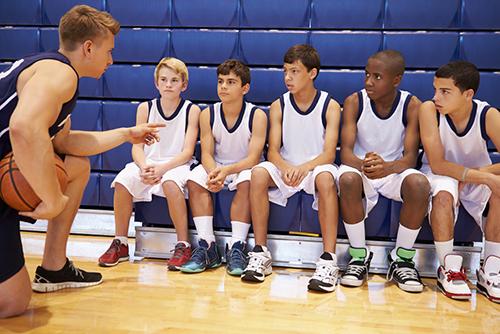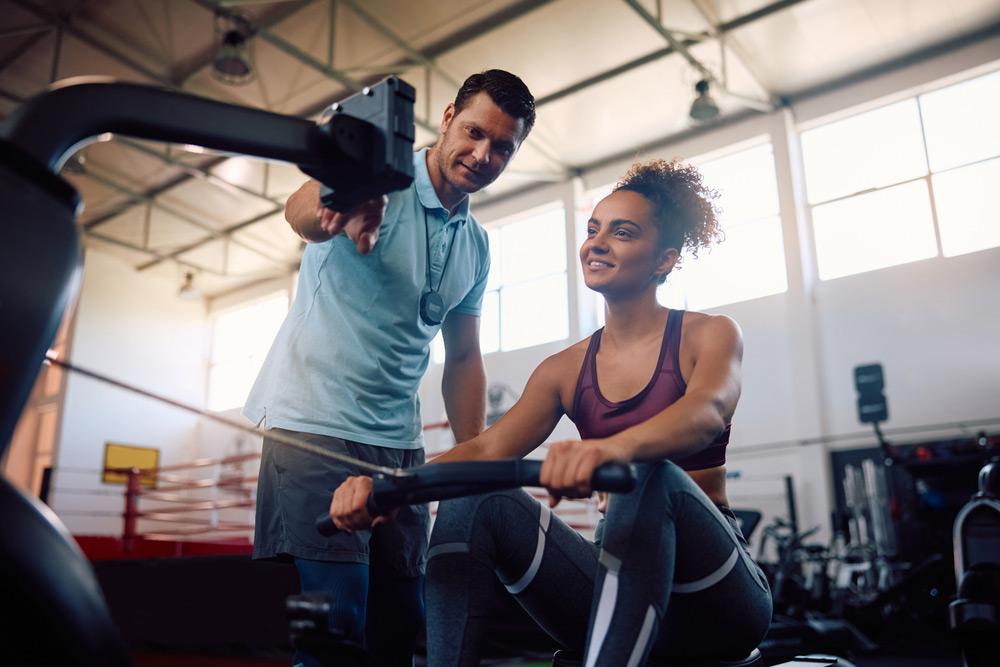 Setting team goals for the season or the entire year should be a group effort—not a coach-driven spreadsheet or list. Each athlete on your team will come into the season with different goals, motivations, and values, and as a coach, part of your job is to help the team blend the overarching team goals and values with those individual drivers.
Setting team goals for the season or the entire year should be a group effort—not a coach-driven spreadsheet or list. Each athlete on your team will come into the season with different goals, motivations, and values, and as a coach, part of your job is to help the team blend the overarching team goals and values with those individual drivers.
The process begins with some thoughtful conversations, and should continue throughout the season. Here, TrueSport Expert and registered social worker, Nadia Kyba, MSW, shares advice for how to get team and individual goals as aligned as possible.
Understand the difference between goals and values
Values include characteristics like hard work, courage, respect, and integrity, while goals are more specific and focused around actionable items, explains Kyba. While your team should have both process and outcome goals for the season, it’s important to focus on the values that the team holds together. Your team should pay attention to values as well as goals. This allows for each individual to also have a set of individual, specific goals for the season while still feeling in alignment with the team’s values.
Start the season with a team meeting about goals and values
 Kyba recommends discussing goals and values early on. In the beginning of the season, hold a team meeting where you discuss all of the objectives for the season. Who do your players want to be? What characteristics will help the team be strong and successful as a unit? What goals should the team focus on? Come up with a list, starting with the bigger picture values like hard work before getting granular on outcome goals like winning a regional championship title and process goals like showing up to practice on time and ready to work every Monday, Wednesday, and Friday. Make sure all the athletes on the team actively participate in this exercise: Athletes are much more likely to buy in and take ownership of goals and values that they create, rather than ones you’ve preselected for them. Allow some time for athletes to also reflect and write out their individual goals for the season, encouraging them to think in terms of process and outcome goals.
Kyba recommends discussing goals and values early on. In the beginning of the season, hold a team meeting where you discuss all of the objectives for the season. Who do your players want to be? What characteristics will help the team be strong and successful as a unit? What goals should the team focus on? Come up with a list, starting with the bigger picture values like hard work before getting granular on outcome goals like winning a regional championship title and process goals like showing up to practice on time and ready to work every Monday, Wednesday, and Friday. Make sure all the athletes on the team actively participate in this exercise: Athletes are much more likely to buy in and take ownership of goals and values that they create, rather than ones you’ve preselected for them. Allow some time for athletes to also reflect and write out their individual goals for the season, encouraging them to think in terms of process and outcome goals.
Share individual goals
 As you create a list of goals and values for the whole team, it’s important to allow athletes to share their individual goals as well. Letting athletes bring these goals to the attention of the team not only creates accountability around the goals, but it allows teammates and you as the coach to better understand each athlete’s individual hopes for the season. As a coach, take note of these individual goals and how they might help or hinder overall team objectives. For instance, an athlete whose goal is to score a certain number of points in a season may need occasional reminders that a core value of the team is teamwork, and he needs to be passing the ball more often. But on the other hand, if one athlete’s goal is to work on her leadership skills and public speaking, you can encourage her to lead warmup drills and pep talks before games, and to emphasize the team value of leadership. You can even take the conversation further by asking athletes how they can connect their individual goals back to the team’s values and goals to inspire actionable ideas.
As you create a list of goals and values for the whole team, it’s important to allow athletes to share their individual goals as well. Letting athletes bring these goals to the attention of the team not only creates accountability around the goals, but it allows teammates and you as the coach to better understand each athlete’s individual hopes for the season. As a coach, take note of these individual goals and how they might help or hinder overall team objectives. For instance, an athlete whose goal is to score a certain number of points in a season may need occasional reminders that a core value of the team is teamwork, and he needs to be passing the ball more often. But on the other hand, if one athlete’s goal is to work on her leadership skills and public speaking, you can encourage her to lead warmup drills and pep talks before games, and to emphasize the team value of leadership. You can even take the conversation further by asking athletes how they can connect their individual goals back to the team’s values and goals to inspire actionable ideas.
Create a list of team values and hang it somewhere it’s easy to see
This can be a team project or it can be relegated to the more artistic members of the team, but create a poster or other wall hanging that lists out the team’s values and goals for the season. Snap a photo or email it to all the athletes (and parents of the athletes if appropriate). This way, the initial goal-setting conversation isn’t forgotten as athletes get busy with the season and with schoolwork.
Understand and acknowledge that not all goals will align perfectly
 While some teams may be more suited to meshing individual goals with team-oriented goals, that won’t always be the case, and as a coach, it’s your job to find the right balance between helping athletes achieve individual success while still helping the team thrive. Most team sports are fairly straightforward, though things like playing time and positions may be challenging as some individuals set goals of more time on the field and less time on the bench. Individual sports like wrestling may prove more challenging, especially for older athletes with goals that prioritize individual performances rather than team unity. And any athlete who’s involved in multiple sports, on multiple teams, or participating in other after-school electives may have a very different set of individual goals compared to the team goal of showing up to every practice. Remember, athletes are rarely actively trying to work against the team goals, but there may be an individual mismatch, and viewing that with empathy rather than aggravation is critical as a coach.
While some teams may be more suited to meshing individual goals with team-oriented goals, that won’t always be the case, and as a coach, it’s your job to find the right balance between helping athletes achieve individual success while still helping the team thrive. Most team sports are fairly straightforward, though things like playing time and positions may be challenging as some individuals set goals of more time on the field and less time on the bench. Individual sports like wrestling may prove more challenging, especially for older athletes with goals that prioritize individual performances rather than team unity. And any athlete who’s involved in multiple sports, on multiple teams, or participating in other after-school electives may have a very different set of individual goals compared to the team goal of showing up to every practice. Remember, athletes are rarely actively trying to work against the team goals, but there may be an individual mismatch, and viewing that with empathy rather than aggravation is critical as a coach.
Get to know athlete’s motivations
It’s one thing to understand that each athlete has individual goals. But it’s arguably just as important to understand the motivation for each goal. The better you can understand the individual goals of your athletes, as well as the ‘why’ behind them, the better you can align those goals with the team’s overarching goals. For example, an athlete whose motivation is rooted in needing to get a scholarship in order to attend college might serve as a reminder to you that not every athlete on the team can afford expensive team gear or can commit to extra weekend practices.
Celebrate victories
Each week, take a moment after practice to acknowledge some small (or big) wins. Did someone on the team truly exemplify the team value of hard work? Did the team as a whole hit the process goal of showing up on time every day? Taking the time to acknowledge when goals and values are being met makes it easier for athletes to remember what they’re working towards, so take the time to make their efforts feel seen.
_______________________________
Takeaway
Every time your players come to a practice or competition, there are both individual goals and values, as well as team goals and values, at play. These tips will help coaches align goals and values, while still honoring each individual.



